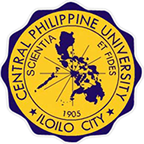Ipakita ang simpleng tala ng item
Farming practices of rice farmers in the top five rice producing barangays in the Municipality of Pototan, Iloilo
| dc.contributor.adviser | Dusaran, Reynaldo N. | |
| dc.contributor.author | Dayot, Maria Candia P. | |
| dc.coverage.spatial | Pototan | en_US |
| dc.coverage.spatial | Iloilo | en_US |
| dc.date.accessioned | 2025-04-11T06:10:03Z | |
| dc.date.available | 2025-04-11T06:10:03Z | |
| dc.date.issued | 2019-04 | |
| dc.identifier.citation | Dayot, M. C. P. (2019). Farming practices of rice farmers in the top five rice producing barangays in the Municipality of Pototan, Iloilo [Unpublished special paper]. Central Philippine University. | en_US |
| dc.identifier.uri | https://hdl.handle.net/20.500.12852/3238 | |
| dc.description | Abstract only | en_US |
| dc.description.abstract | This study was conducted to determine the different practices of rice farmers in the top five rice producing barangays in the Municipality of Pototan, Iloilo. This study employed a one-shot survey design in gathering data from 221 rice farmers of the top five rice producing barangays of Pototan as respondents using a structured interview schedule. All data were processed and analyzed using the Statistical Package for the Social Sciences (SPSS). Frequency and percentage distribution were used as basis for data analysis and interpretation. The rice farmers respondents were generally 51 to 60 years old, male, married, Roman Catholics, graduated in elementary, does not have any other source of income, and had been growing rice for an average of 27-36 years. The respondents had an average of one hectare and below owned plain land, with two cropping per year and an average production of more than a hundred sacks of rice per hectare, and get their water resource from the irrigation (NIA). In the preparation of land, they generally use hand tractor for plowing, hand tractor/tractor with harrows for harrowing and hand tractor/tractor with leveling boards for leveling. They had two cropping per year and used Rc 222 both in first and second cropping by direct seeding. They generally used inorganic chemical inputs to clean their field, control pests and diseases, and fertilize their rice. The respondents generally used a harvester to harvest and thresh rice, used its wastes as compost by making the harvester scatter the straw in the field, and sold the rice directly to the buyers before drying them. Furthermore, the rice farmer respondents generally were not aware of the possible negative effects of their different practices in rice farming and the possible effects that could occur in the environment. | en_US |
| dc.format.extent | vii, 40 leaves | en_US |
| dc.language.iso | en_US | en_US |
| dc.subject.ddc | 630.72 D33 2019 | en_US |
| dc.subject.lcsh | Rice farmers | en_US |
| dc.subject.lcsh | Rice farming | en_US |
| dc.subject.lcsh | Farmers | en_US |
| dc.subject.lcsh | Sustainable agriculture | en_US |
| dc.subject.lcsh | Agricultural productivity | en_US |
| dc.subject.lcsh | Farm management | en_US |
| dc.subject.lcsh | Agricultural machinery | en_US |
| dc.subject.lcsh | Agriculture--Environmental aspects | en_US |
| dc.subject.lcsh | Irrigation farming | en_US |
| dc.title | Farming practices of rice farmers in the top five rice producing barangays in the Municipality of Pototan, Iloilo | en_US |
| dc.type | Special paper | en_US |
| dcterms.accessRights | Limited public access | en_US |
| dc.description.bibliographicalreferences | Includes bibliographical references | en_US |
| dc.contributor.department | College of Agriculture, Resources and Environmental Sciences | en_US |
| dc.description.degree | Bachelor of Science in Environmental Management | en_US |


